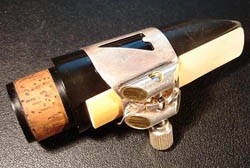Blow: From Marshmallows to Microbes

At Maker Faire a few weeks ago, I wandered with my kids through a maze of techno-geeky wonderment. We started our day-long exploration of things that lie at the intersection of science, art, and DIY with a roundup of scuttling, skittering, line-following, light-seeking bots. They might not be useful around the house, but there was plenty of simple robotics wow-factor to go around. Solar-powered, light- or color-sensing, motion-detecting... there were a bevy of bots to explore—and numerous opportunities to remind my young inventors, "See, you could program your Mindstorms® to do something like that."
Zigzagging around a corner, we ended up in front of the Howtoons booth. If you've poked around the Science Buddies directory of Project Ideas, you might have run into the Do Submarines Need Fins? project from the Aerodynamics & Hydrodynamics area. The project is based on Howtoons' illustrated Soda Bottle Sub engineering project. I am a big fan of the graphic novel format (yep, adults read them, too), and it's great to see the quality (and quantity!) comic-style work HowToons is doing illustrating science projects.
As we stood there looking at the samples on their table, the guy behind the table took a split-second look at my 7-year-old and pulled out a shiny white beauty of a PVC-pipe-based marshmallow shooter.
The marshmallow shooter is a classic HowToons illustrated design project, and he was quick to show off the admirable distance he could launch a marshmallow into the crowd (a belated "oops" to the lady in blue fifty yards or so away!). My little guy, saucer-eyed at the thought of beaning tons of unsuspecting people with squishy white pellets, and a veteran in the marshmallow shooter world, was quick to ask, "Can I try it?"
He couldn't try it, of course, because to use a marshmallow shooter, you have to put your mouth to one open end of the tubing and blow, the air making a rapid circuit through the pipes to propel the marshmallow out the other open end. Right... it was covered in mouth germs and filled with droplets of spit. Bottom line: marshmallow shooters should not be shared.
The HowToons guy explained that. (Maker Faire folks get plenty of practice explaining things to a curious but sometimes unknowing or young crowd!) I reinforced the germ-laded explanation. And we moved along.
With or without the chance to blow marshmallows, there was plenty to see! And the chance to push buttons and send gigantic fireballs shooting out of the top of a variety of devices once outside was enough to divert even a seven-year-old.
Making Connections
A few days after Maker Faire, I spotted a story at ScienceNews that brought the marshmallow shooter moment to mind: "Don't share that clarinet: Bacteria can linger on woodwind instruments for days." Hinging on recent findings from a team of microbiologists at Tufts University School of Medicine in Boston, the story notes that microbes linger longer on certain types of instruments than others. In particular, instruments that use a reed (a type of cane) harbor bacteria longer than instruments made of metal.
Another recent report in Science Daily also cites the lasting power of bacteria on instruments, both woodwind and brass. A study of 13 instruments that hadn't been played in at least a week turned up a whopping 422 kinds of bacteria.
While similar, the two reports seem to differ in terms of the "importance" of knowing that the band can be a microbial hotspot, and the findings do not conclusively indicate that sharing a woodwind contributes to the spread of germs between players. Even so, I'm figuring that sharing marshmallow shooters might be a safer bet!
Making it Your Own
Whether you're in the band or just want to know your risk factor with PVC piping, exploring the lifespan of microbes on instruments — or other blow-based apparatuses — is something that could be worthy of a DIY science project. Our Microbiology Techniques & Tips can help as you think about designing your own experimental procedure.
- Curious about the difference between the lifespan of bacteria on reed-based instruments compared to metal ones? It may have something to do with the oligodynamic effect. You can learn more about the toxic effect of certain metals on bacteria in the Is the Gold in My Jewelry Real? project.
- Got a novel idea for helping quickly, easily, and reliably disinfect instruments? Take a look at the Engineering Design Guide and get started developing and testing your solution! (See here for a list of standard approaches to cleaning instruments.)
- Wondering if you can build a bot or program your LEGO® Mindstorms to use marshmallows? Get building with the Go, Gadget, Go! Building Robots with LEGO® Mindstorms® project. How far can your bot throw?
We want to see what you come up with!
Categories:
You Might Also Enjoy These Related Posts:
- Plastics and Earth Day - Science Projects
- Arduino Science Projects and Physical Computing
- 10+ Robotics Projects with the BlueBot Kit
- 5 STEM Activities with Marshmallow Peeps
- March Madness Basketball Science Projects: Sports Science Experiments
- Women in STEM! More than 60 Scientists and Engineers for Women's History Month
- Explore Artificial Intelligence and Machine Learning with Student AI Projects
- 10 Reasons to Do the Rubber Band Car Engineering Challenge










